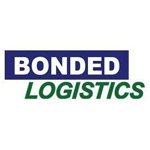Optimizing Inventory Control: Challenges & Best Practices
Inventory control ensures businesses maintain the right stock levels to meet customer demands while minimizing costs. This article explains the core principles of inventory control, its benefits, common challenges, and essential techniques to optimize your inventory processes.
Key Takeaways
- Effective inventory control is essential for optimizing stock levels, reducing costs, and enhancing customer satisfaction, serving as a critical element of business operations.
- Businesses face challenges in inventory control, including manual errors, limited visibility, and fluctuations in demand, which can lead to inefficiencies and increased costs.
- Incorporating technology, such as automated systems and RFID, alongside best practices like regular audits and clear labeling, can significantly improve inventory management and operational efficiency.
Understanding Inventory Control
Inventory control is the organizational backbone ensuring that businesses maintain the right stock levels to meet customer demand while minimizing costs. It encompasses a range of practices and systems designed to optimize cash flow, reduce resource expenditure, and enhance visibility across the supply chain through an effective stock control inventory control process.
Departments must communicate effectively to manage and report inventory statuses accurately.
Definition of Inventory Control
At its core, inventory control is the systematic approach to overseeing and managing stock levels within a business. Employing various inventory control techniques allows organizations to balance supply and demand, ensuring customer satisfaction and maximizing profitability. This involves tracking inventory quantities, monitoring customer demand, and making informed decisions to prevent overstocking or shortages.
Inventory control directly impacts a business’s ability to meet customer demands and manage costs. Proper inventory management ensures that companies can respond swiftly to changes in market demand, thereby maintaining a competitive edge.
Inventory Control vs. Inventory Management
While inventory control focuses on managing stock levels and ensuring accurate tracking of existing inventory, inventory management encompasses a broader scope, including procurement, logistics, and overall supply chain efficiency. Inventory control specifically deals with the quantities and availability of products already present in a warehouse, ensuring they are accounted for and correctly located.
In contrast, inventory management involves strategic decisions about what to stock, how much to stock, and when to replenish inventory. Better inventory control practices can enhance supply chain efficiency and cost savings.
Key Benefits of Effective Inventory Control

Effective inventory control is a revolution for businesses, offering numerous benefits that enhance operational efficiency and profitability. Maintaining appropriate stock levels helps organizations avoid excess inventory and stockouts, leading to significant cost savings and waste reduction.
Optimizing inventory processes reduces manual errors and ensures smoother supply chain operations, boosting customer satisfaction and enhancing supply chains.
Enhanced Accuracy and Reduced Errors
Effective inventory control minimizes human error, ensures precise stock data, and reduces the likelihood of stockouts or over-ordering. Accurate inventory tracking leads to smoother operations and better decision-making, as businesses can rely on up-to-date information to manage their stock levels effectively.
Cost Savings and Waste Reduction
Proper inventory control practices help maintain balanced stock levels, reduce waste from expired or obsolete items, and cut unnecessary storage costs. Avoiding excess stock frees up capital and reduces handling costs, resulting in significant savings. Techniques like FIFO ensure that older stock is sold first, preventing spoilage and obsolescence.
Improved Customer Satisfaction
Maintaining optimal inventory levels is key to meeting customer demand consistently, which in turn fosters trust and enhances customer satisfaction. By ensuring that products are available when customers need them, businesses can build a reputation for reliability and efficiency, ultimately driving customer loyalty and repeat business.
Common Challenges in Inventory Control

While effective inventory control offers numerous benefits, it is not without its challenges. Businesses often struggle with manual errors, time consumption, and limited visibility, which can lead to inaccuracies and inefficiencies in managing inventory levels.
Additionally, fluctuations in customer demand can complicate inventory management, leading to either surplus stock or stockouts.
Manual Errors and Time Consumption
Manual inventory control methods are labor-intensive and prone to errors, resulting in inaccuracies and increased operational costs. Common issues include discrepancies in vendors’ invoices, purchase orders, and physical inventory counts, which can complicate inventory management. Utilizing spreadsheets for inventory control also increases the risk of human error and demands significant labor.
Optimizing inventory control systems and integrating automated solutions can significantly reduce these errors.
Limited Visibility
Limited visibility in inventory control can lead to issues with locating stock, affecting delivery efficiency and overall inventory management. This challenge is particularly pronounced in businesses with large stock, complex warehousing, and multiple sales channels, resulting in inventory level mismanagement across multiple locations.
Addressing this issue requires improved tracking and visibility solutions to ensure inventory quality and prevent dead stock.
Demand Fluctuations
Customer demand fluctuations create significant challenges for inventory control, affecting stock management. These fluctuations can lead to either surplus stock or stockouts, complicating inventory management and increasing costs.
Developing strategies to anticipate and respond to these changes is essential for maintaining efficient inventory control.
Types of Inventory Control Systems
Inventory control systems play a crucial role in managing and tracking inventory effectively. There are two main types of inventory control systems: periodic and perpetual. Each type has its own applications and advantages.
Business type, size, and kind of inventory determine the choice of an inventory control system, with some organizations integrating systems with ERP or developing in-house solutions.
Periodic Inventory System
A periodic inventory control system relies on physical counts to update inventory records, making it suitable for smaller businesses or those with less frequent stock changes. However, this system can lead to outdated stock levels, manual labor requirements, and potential errors, disrupting regular business operations.
Periodic inventory systems typically involve conducting physical counts at set intervals, such as monthly or annually.
Perpetual Inventory System
The perpetual inventory system provides real-time stock updates with each transaction or stock reception, offering continuous inventory tracking. This system utilizes automation and centralized databases to log inventory information, improving tracking accuracy and operational efficiency. A perpetual inventory control system enhances these capabilities further.
Perpetual inventory systems are recommended for businesses with a large volume of stock due to their ability to provide up-to-date inventory levels.
Essential Inventory Control Techniques
Various inventory control techniques are essential for managing stock effectively, each catering to different business needs and situations. Techniques like FIFO, LIFO, batch tracking, and safety stock help businesses maintain optimal inventory levels and meet customer demands.
Bulk shipments, for example, can be cheaper due to fewer shipments, making them an attractive option for inventory control.
FIFO and LIFO
The FIFO (First-In-First-Out) method processes older stocks first to maintain freshness and provide a clearer evaluation of inventory values. Conversely, the LIFO (Last-In-First-Out) method ships recent items first to prevent spoilage, ensuring that perishable goods are used before they degrade.
Just-in-Time (JIT) Inventory
The Just-in-Time (JIT) inventory technique involves holding minimal inventory and purchasing only when needed, reducing holding costs and preventing overstocking. This approach frees up cash flow and reduces overhead costs, although it carries the risk of stockouts due to delays, especially without safety stock.
Min-Max Inventory Control
Using a Min-Max inventory strategy allows businesses to automatically trigger orders to maintain optimal stock levels, avoiding shortages. This strategy ensures that reorder points are set, helping maintain appropriate inventory levels and managing lead time efficiently.
Leveraging Technology for Inventory Control

Technology plays a pivotal role in enhancing inventory control, providing tools that reduce time, errors, and inefficiencies associated with manual methods. Inventory control software improves visibility and provides alerts for low inventory levels, ensuring real-time access and efficient management.
Technologies like barcodes and RFID tags enhance tracking, making it easier to manage inventory across multiple locations and sales channels.
Automated Inventory Control Systems
Automated inventory control systems use advanced technologies like software, RFID, and barcode scanning for accurate tracking. These systems provide real-time updates, minimize human error, and streamline operations, making them particularly beneficial for businesses with higher volumes or complex inventories. An effective inventory management system and inventory management systems can enhance these benefits further.
Automated tracking helps avoid overselling and ensures effective decision-making.
Cloud-Based Inventory Solutions
Cloud-based inventory systems provide a modern approach to managing inventory, enhancing accessibility and efficiency. These systems provide flexibility and seamless integration with other business operations, improving data consistency and scalability.
Real-time access to track inventory data is crucial for businesses looking to grow and respond to market changes effectively.
Radio Frequency Identification (RFID)
RFID technology enhances inventory tracking by allowing items to be scanned without direct line-of-sight, making it more efficient than traditional barcode systems. There are two types of RFID tags: active and passive, each catering to different inventory management needs.
RFID also addresses stock security concerns, helping prevent theft by external parties and staff.
Best Practices for Optimizing Inventory Control
To optimize inventory control, businesses should develop a clear strategy and utilize effective tools. Real-time data access, scalability, and seamless integration with other software are crucial for efficient inventory management.
Categorizing stock using the ABC method and mathematical forecasting can help predict inventory needs, while an organized warehouse facilitates easy identification of damaged or missing goods.
Setting Reorder Points
Reorder points prevent inventory shortages and maintain stock levels. When stock falls below the reorder point, businesses should place a reorder to ensure continuous availability of products.
Regular Inventory Audits
Maintaining accurate inventory records is vital for managing assets and ensuring proper audits. Regular audits verify the accuracy of inventory records, helping businesses manage their stock effectively and avoid discrepancies.
Consistent Labeling Systems
Consistent labeling systems minimize confusion and errors in identifying inventory items. By ensuring that all staff members can quickly and accurately locate items in the warehouse, businesses can speed up the inventory process, reduce pick times, and improve overall efficiency.
Inconsistent labeling can lead to misplacement, wasted time, and increased operational costs.
How Cadre Technologies Helps You Master Inventory Control
Optimizing inventory control requires more than best practices—it demands the right technology partner. Cadre Technologies offers robust, scalable warehouse management and inventory control solutions designed to eliminate inefficiencies, improve visibility, and drive operational excellence across your supply chain.
Cadre’s advanced Warehouse Management Systems (WMS) empower businesses to track, manage, and optimize inventory in real time. From barcode scanning and RFID integration to intelligent order routing and replenishment automation, Cadre gives you the tools to eliminate costly errors and stock discrepancies. Our cloud-based and on-premise solutions are tailored for 3PLs, distributors, and warehouse operators who need high-performance systems that grow with their business.
Key capabilities of Cadre’s inventory control solutions include:
- Real-time visibility into inventory across multiple locations
- Automated workflows to reduce manual intervention and error rates
- Dynamic reporting and analytics to support smarter decision-making
- Seamless integration with ERP, eCommerce, and transportation systems
Whether you’re dealing with high SKU volumes, fluctuating demand, or complex customer requirements, Cadre Technologies helps you stay ahead. By enabling tighter control and smarter forecasting, our solutions turn inventory into a strategic advantage.
Summary
In summary, effective inventory control is fundamental to maintaining optimal stock levels, reducing costs, and enhancing customer satisfaction. By understanding the differences between inventory control and management, leveraging technology, and implementing best practices, businesses can streamline their operations and achieve greater efficiency. Embracing these strategies will not only optimize inventory control but also contribute to the overall success and profitability of the organization.
Ready to transform your inventory control? Contact Cadre Technologies to schedule a demo and see how we can streamline your operations.
Frequently Asked Questions
What is the primary difference between inventory control and inventory management?
The primary difference is that inventory control specifically addresses monitoring stock levels, whereas inventory management includes a wider spectrum of activities such as procurement and logistics.
How does effective inventory control improve customer satisfaction?
Effective inventory control improves customer satisfaction by ensuring that businesses can consistently meet customer demand, thereby fostering trust and reliability. Consequently, this leads to a more positive shopping experience for customers.
What are the main challenges associated with manual inventory control?
The main challenges associated with manual inventory control include its labor-intensive nature, susceptibility to errors, and significant time consumption, which result in inaccuracies and heightened operational costs.
How can technology improve inventory control?
Technology significantly improves inventory control by enhancing visibility, minimizing errors, and offering real-time updates through automated systems and cloud-based solutions, ultimately resulting in more efficient inventory management.
What is the Just-in-Time (JIT) inventory technique?
The Just-in-Time (JIT) inventory technique aims to minimize inventory levels by purchasing goods only as needed, which reduces holding costs and prevents overstocking. However, this approach can lead to stockouts if delays occur in the supply chain.










